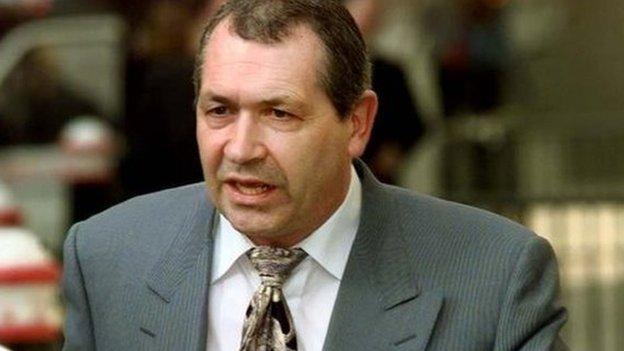John Palmer: How Brinks-Mat millions came to Bedminster
- Published
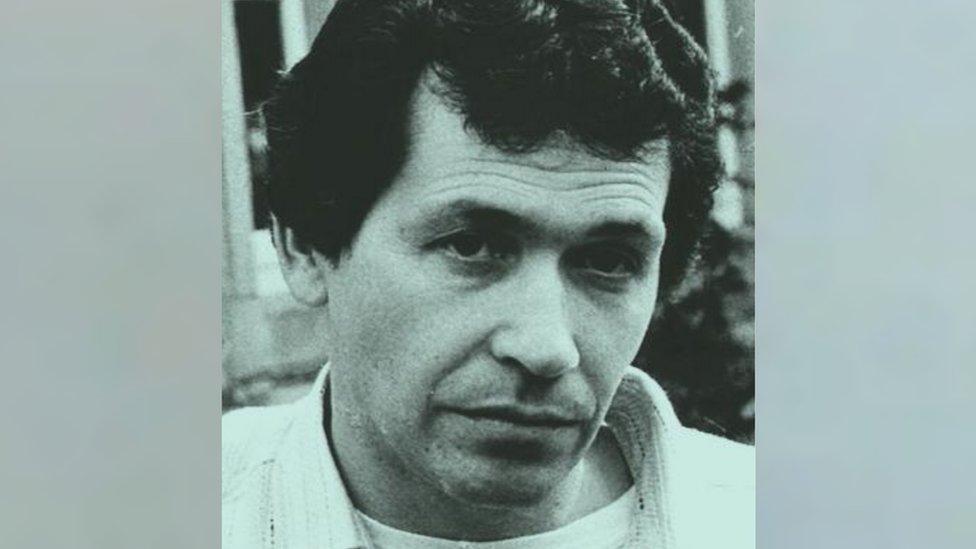
John Palmer ran several jewellery shops in the Bristol area
The woman who leads a historical tour of a city suburb says people still find it hard to believe it was pivotal to one of the UK's biggest crimes.
Sheila Hannon takes people on walking tours of Bedminster in Bristol, and features in the new BBC podcast Gangster about the life of John Palmer.
He was accused of helping melt down gold stolen in the Brink's-Mat robbery, external.
"We love watching the expressions on people's faces as they discover what happened," said Ms Hannon.
More than 6,000 gold bars were stolen in the robbery from a warehouse, external on the outskirts of Heathrow on 26 November, 1983.
Two members of the gang were quickly caught but the gold vanished along with the other criminals involved, who included the notorious Kenneth Noye.
At the time Palmer, originally from Birmingham, was running a jewellery business in Bedminster, and had some expertise in gold and precious metals, through his business Scadlynn Ltd.
Ms Hannon, who runs the Blood and Butchery Bedminster walking tour, said the police already had an eye on Palmer - who earned the nickname "Goldfinger" for his role - even before the Brinks-Mat robbery,.
"A retired policeman did the tour one night, and he said he remembered being on duty and watching Scadlynn and seeing one or two interesting people coming out," she said.
Livvy Haydock, presenter of the Gangster podcast, said Palmer became involved because the Brinks-Mat gold was too pure to be sold - it would have raised alarms at gold brokers, with concerns exacerbated at the time by the continuing manhunt for the men behind the raid.
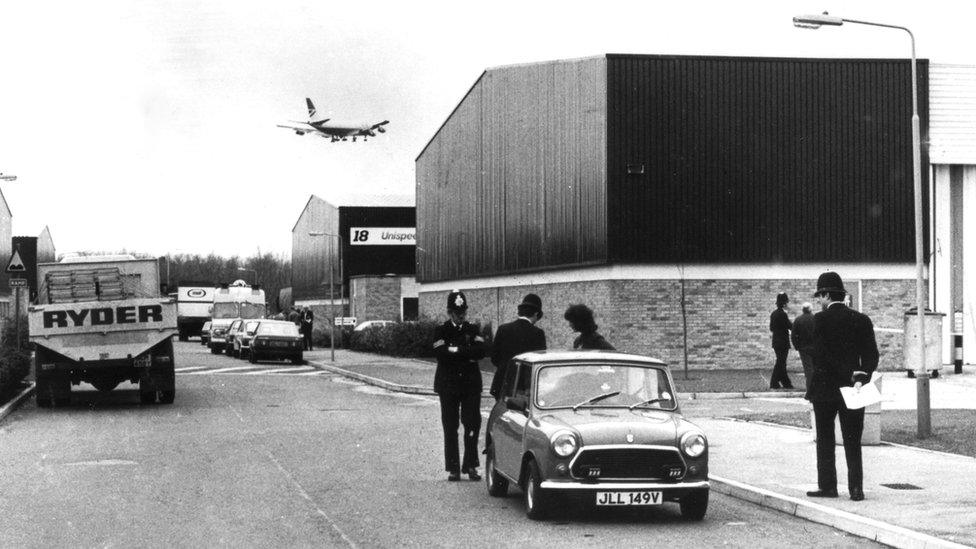
The armed gang who raided the Brinks-Mat warehouse were thought to have been after cash, but found gold instead
The gold needed to not just be melted down but also mixed with other less precious metals to hide its origin, which is where Palmer came in.
In the years building up to the robbery, he had moved with his wife and children to a small mansion on the outskirts of Bath, a Grade II-listed building set in 30 acres of land.
'Bin bags full of notes'
It was here he used his smelter to process the gold and the proceeds from selling it were laundered through a local bank in Bedminster.
A now-closed branch of Barclays, was where the money was deposited, said Ms Hannon.
"They saw nothing odd over there, apparently. Big burly men were going in with plastic bin liners - filled to the brim with notes," she said.
"They did do something, Barclays - and this is true. They employed more staff and ordered in more £50 notes to cope with the demand."
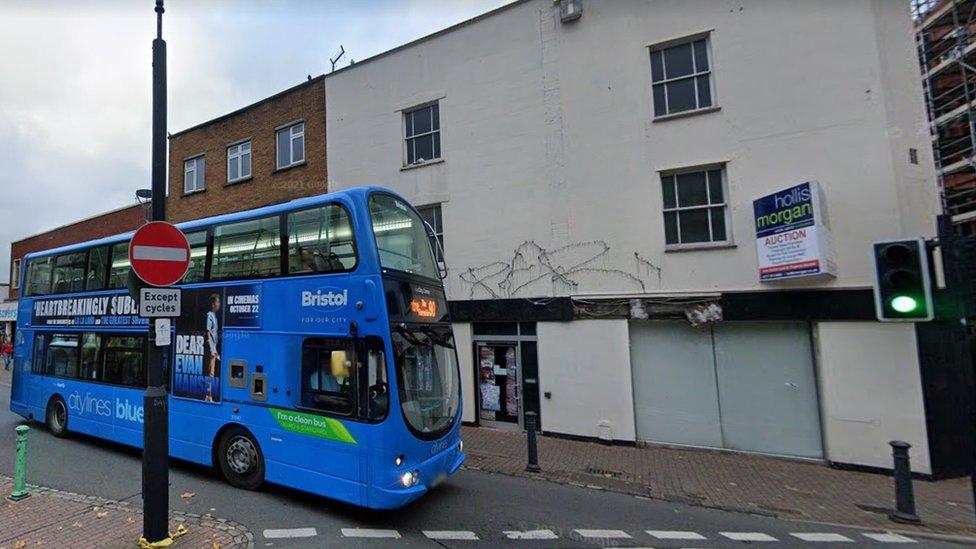
The proceeds of the gold was laundered through the now closed Barclays branch in Bedminster (white building)
In 1987, Palmer faced trial for his role in melting down the Brinks-Mat gold, but was acquitted after admitting in court that he had melted down the gold, but did not know it was stolen.
He was later convicted of time-share fraud and was killed when he was shot six times outside his home near Brentwood in Essex
Ms Hannon said the money-laundering operation is believed to have seen £13m processed through the branch of Barclays.
"Large-scale international money-laundering - it all began right here," she said.
The full Gangster series about John Palmer is available on BBC Sounds.

Follow BBC West on Facebook, external, Twitter, external and Instagram, external. Send your story ideas to: bristol@bbc.co.uk
Related topics
- Published6 June 2019

- Published4 April 2016
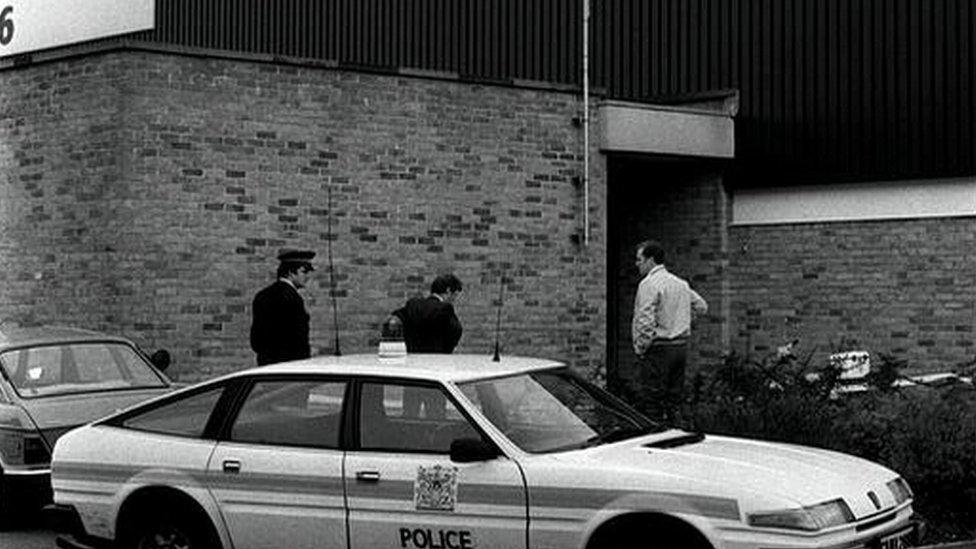
- Published4 April 2016

- Published2 July 2015
